There’s precedent.
1885 saw a major April snow event in Ottawa. 30.5 cm reported on the 2nd, 30.6 cm on the 3rd and another 30.5 cm on the 4th. Over 1 metre in total in 52 hours. It tapered off to 6.4 cm the following day, and 50.8 mm of rain on the 6th.
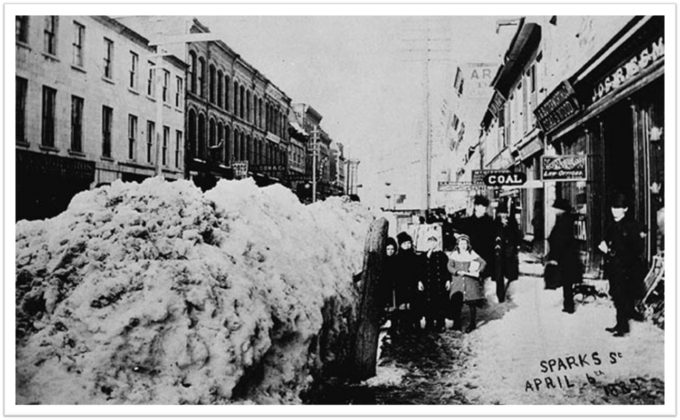
Sparks Street, 6 April 1885, Samuel J. Jarvis/Library and Archives Canada, C-002186
There’s remarkably little coverage in the Ottawa Citizen. Easter Sunday was 5 April and newspapers were preoccupied with the Riel uprising. There was mention of employing extra staff to clear roofs at Lansdowne Park and cancellation of events as guests could not get into the city.
The Ottawa Citizen ran this poem referring to astrometeorologist Ezekiel Stone Wiggins.
NOT WEATHER WISE, MUCH OTHERWISE.
BY A DRIFT-BOUND PASSENGER.
(For The Citizen.)
Heavy storm began at Ottawa 9 am. April 2; still raging, 6 pm, Apnl 3; snowfall, 24 Inches ; by far the greatest of the year.
N.B.—No warning from Wiggine.
O Wiggins, O! delusive prophet Wiggins !
Though your very dubious fame has spread
abroad,
The behaviour of the weather in those diggins (sic)
Plainly tells us your pretensions are a fraud.
That rude March would have his equinoctial bluster
It was safe for any almanac to say ;
But if special storm predictions would pass muster,
They must specify the place and name the day.
Scaring honest peorle living by the ocean,
Threatening tempests which neglected to appear ;
You malcted (?) sailors, chiefly Nova Scotia,
A badly needed fortnight’s wage last year.
And now, Wiggins, what on earth have you been doing,
Say where’s your vaunted skill in Zadkeil lore,
While ‘neath your very nose a storm was brewing,
The like of which we’ve rarely seen betore.
Yet not a whisper from our Mahdi prophet!
Our oracle of Ottawa was dumb!
If still you stride the tripod, pray get off it —
Collapse, subside, come down, ah, Wiggins, come.
We railway travellers had from you no warning.
Driifts bar our progress, engines shrick in vain ;
Here we must shiver tiil to-morrow morning—
sweet our revenge if you were on our train.
Too long imposed on women of both sexes,
ln time the errant humbug to explode,
Which reasonable people often vexes.
You gales foretell— Pshaw, Wiggins, you “be blowed “!
Two feet of snow-fall! Wild nor’-easter blowing ! .
The third of April. Storms defy all rule.
No hint from Wiggins. Needs there further showing : ;
That weather wisdom makes its April fools?
Note: Significantly less snow was recorded on those April 1885 days at the Experimental Farm station. Snowfall is notoriously difficult to quantify.


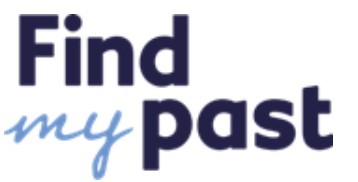 This week, there are some out-of-the-ordinary additions to the FMP collection that are particularly interesting for those with 20th-century Coventry ancestry and, surprisingly, beyond.
This week, there are some out-of-the-ordinary additions to the FMP collection that are particularly interesting for those with 20th-century Coventry ancestry and, surprisingly, beyond.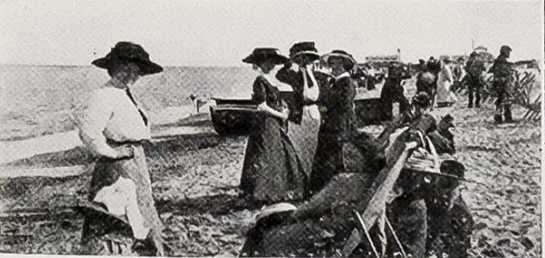 I was interested to read a report of a 1910 works outing to Great Yarmouth, a long day starting out by train at 5:50 am, arriving back in Coventry at 2 am. It includes photos of women in long dresses on the beach.
I was interested to read a report of a 1910 works outing to Great Yarmouth, a long day starting out by train at 5:50 am, arriving back in Coventry at 2 am. It includes photos of women in long dresses on the beach.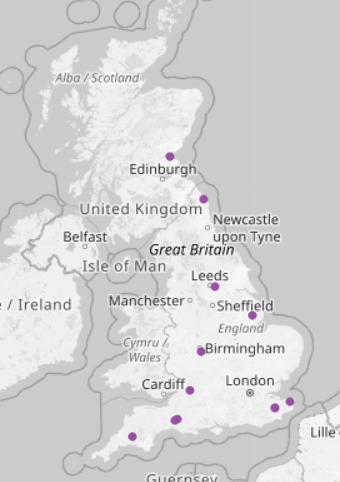

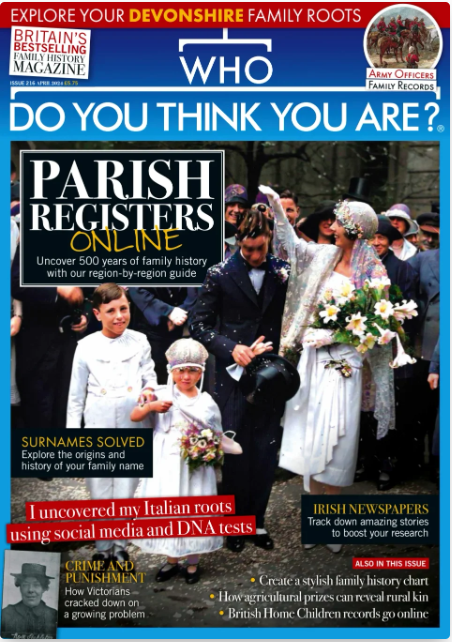 Here are the feature articles from the new issue, and selected highlights.
Here are the feature articles from the new issue, and selected highlights.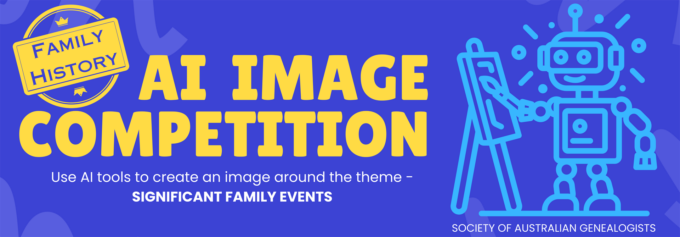 Congratulations to the Society of Australian Genealogists, which has announced a competition highlighting the growing awareness of the use of Artificial Intelligence within the Family History Community.
Congratulations to the Society of Australian Genealogists, which has announced a competition highlighting the growing awareness of the use of Artificial Intelligence within the Family History Community.